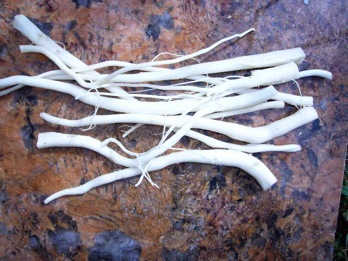
Wild mustard and radish roots have a tough outer jacket which when removed shows a bright, white tasty inner core. Photo by Green Deane
In the foraging community it would be difficult to find anyone who does not know you can eat mustard greens. But what about the roots?
Wild mustards and wild radishes (Sinapis and Raphanus) both have edible blossom, seeds, leaves and roots. They are not only a wild food but a cultivated crop as well. And while one should be able to tell the mustards and radishes apart it is a bit moot in that they are used in the same way for our purposes. Both can provide greens early on then roots just before they blossom and later the seeds. You can also collect the roots after they seed but the roots can be a bit tougher then. My favorite way to cook them is to slice them like carrot rounds and boil them until tender. They tastes very much like turnips. However, they do give off a strong odor when cooking so you might want to have your vent already on or cook them outside.
Taking the tough jacket off is fairly easy. First cut the top off like you could a carrot. Then look at the root from the cut end. You can see how the jacket wraps around the root. With a knife carefully start at the top of the root and working parallel with the root make a cut about a quarter of an inch deep — or as deep as the jacket — and a couple of inches long. Then use your thumbs to separate the edges of the cut. Once cut usually the jacket will peel off easily. Incidentally, the roots of the cultivated mustards are also edible if you find them large enough. And of course the roots of the domesticated radish are well-known comestibles.
Botany Builder #36: There are petals and there sepals. Sepals can look like petals. A good example is the Daylily. It looks like it has six petals but it really has three petals then outward and downward three sepals that look like petals. Sepals can look different that petals. But when the petals and sepals look alike it is called a “Tepal.” If you think that looks made-up you’re right. The French did it. It’s their alteration of sepale and petale. It can be said TE-pol, or, TEP-ol. Tepal is used when the petals and sepals are undifferentiated, meaning they really look the same (It’s their position and arrangement that let’s us know they are not all petals.) Botanists tell us petals and sepals developed in response to different means of pollenating. Every little advantage helps in the plant world.
Epazote is too nasty to freeze. I will readily admit that comment might reflect my bias towards the spice and green that is enjoyed by millions. A member of the Chenopodium clan Epazote is an aromatic spice that is also eaten as a pot herb. Unfortunately for me it smells and tastes like an industrial floor cleaner. Cilantro also assaults my pallet. That said Epazote is used wildly in Hispanic and native central and south American cooking. Admittedly we don’t get much of a winter here, frosts and upper 20s on occasion — except this past week. Through it all Epazote seems to stay green and fresh. It must be the substantial oil content, the same oil that gives it a strong aroma that some find delightful and others disgusting. To read more about Epazote go here.
Sustained cold weather has disrupted the foraging class schedule but hopefully everything will return to seasonal normal. Here are some of my upcoming foraging classes: Saturday, February 1st, Mead Garden: 1500 S. Denning Dr., Winter Park, FL 32789, 9 a.m. Sunday, February 2nd, Wickham Park: 2500 Parkway Drive, Melbourne, FL, 32935, 9 a.m. Saturday, February 8th, Boulware Springs Park, 3420 SE 15th St. Gainesville, FL 32641. 9 a.m. Sunday, February 9th, Jervey Gantt Recreation Complex, 2390 SE 36th Ave. Ocala, FL, 34471, 9 a.m. Saturday, February 15th, Bayshore Live Oak Park, 23000 Bayshore Rd., Port Charlotte, FL, 33980, 9 a.m. Sunday, February 16th, Dreher Park, 1200 Southern Blvd. West Palm Beach, FL, 33405, 9 a.m.
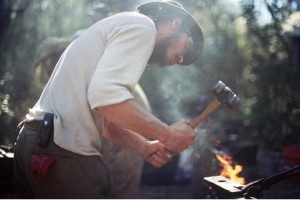
Florida EarthSkills 2014
Two weeks from now will be the Florida Earthskills gathering. This year it will be held at Little Orange Creek Nature Park, which is a little over a mile east of Hawthorne, Florida. I will be giving plant walks there and as this is a new location it should an interesting place to explore. Dates are the 6th through the 9th of February. EarthSkills conferences differ greatly from herbal conferences. While one can find herbalism at an EarthSkills gathering it is what the name implies, earth skills. You can learn a variety of skills and techniques from identifying edible weeds to making a bow to dying your own handmade clothes. It’s a very communal gathering that reminds me of many such free-spirited events back in the 60s. Cool! See you there.
This is a reminder the Florida Herbal Conference 2014 will be held in Deland in late February. Also for the third year in a row I will be leading weed walks at the conference, a challenge in winter on dry ground. My walks are usually first thing in the morning when the air is cool and the coffee hot. Although it is the Florida Herbal Conference it draws teachers and students from all over North America. Two other Florida “locals” will be teaching classes besides the scheduled main speakers. They are Andy Firk, who holds a wide variety of workshops throughout the year at his “Bamboo Cove” in Arcadia, Earthskills host Mycol Stevens of Gainesville. Mycol’s name used to be Michael but he came to like mushrooms and other fungi so well he changed the spelling.
Though your foraging may drop off during the winter it’s a great time to study wild edibles with my nine DVD set. Each DVDs has 15 videos for 135 in all. They make a great gift. Order today. Some of these videos are of better quality than my free ones on the Internet. They are the same videos but many people like to have their own copy. I burn and compile the sets myself so if you have any issues I handle them personally. There are no middle foragers. And I’m working on adding a tenth DVD. To learn more about the DVDs or to order them click here. I also uploaded a new video to You Tube this week. This one is about Cereus fruit. It is not on the DVDs but you can see it here.
 Green Deane’s old Volvo had a fatal cardio-vascular event this past week. It did not even make it to the emergency room garage dying not intestate but interstate. It was, however, a junk organ donor. A very good friend sold it to me five years ago for $100 — thank you Patrick. This does not leave the Village Green without transportation but looking for a replacement. Difficulties are often opportunities and perhaps it is time to get wheels that more reflect Green Deane. With Volvos one thinks Sweden, skiing, blonds… Perhaps a frumpy jeep will do, or the like…think outdoors, field and stream, plants, weeds… I drove a Willy’s jeep back in the — cough cough — 60s… We might even work out a trade with foraging lessons. I’m a reasonably good mechanic so no vehicle have to be pristine or pretty. It just needs to get me from Amaranth to Zizania. Should you know of such a vehicle I can be contacted though this newsletter’s email.
Green Deane’s old Volvo had a fatal cardio-vascular event this past week. It did not even make it to the emergency room garage dying not intestate but interstate. It was, however, a junk organ donor. A very good friend sold it to me five years ago for $100 — thank you Patrick. This does not leave the Village Green without transportation but looking for a replacement. Difficulties are often opportunities and perhaps it is time to get wheels that more reflect Green Deane. With Volvos one thinks Sweden, skiing, blonds… Perhaps a frumpy jeep will do, or the like…think outdoors, field and stream, plants, weeds… I drove a Willy’s jeep back in the — cough cough — 60s… We might even work out a trade with foraging lessons. I’m a reasonably good mechanic so no vehicle have to be pristine or pretty. It just needs to get me from Amaranth to Zizania. Should you know of such a vehicle I can be contacted though this newsletter’s email.
 Lastly this newsletter is taking guest articles on plants and foraging. Reasonably short is good, but longer articles can be serialized. Topics that are seasonal or lend themselves to illustration are nice. Weed recipes with picture of the final food are also welcomed. So far we’ve had articles on chickweed and mushrooms. Tell me what you have in mind. Again I can be contacted though this newsletter’s email.
Lastly this newsletter is taking guest articles on plants and foraging. Reasonably short is good, but longer articles can be serialized. Topics that are seasonal or lend themselves to illustration are nice. Weed recipes with picture of the final food are also welcomed. So far we’ve had articles on chickweed and mushrooms. Tell me what you have in mind. Again I can be contacted though this newsletter’s email.

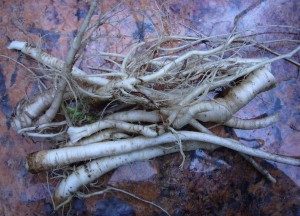
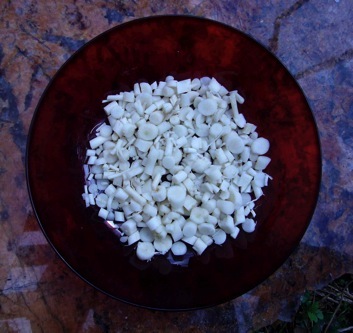
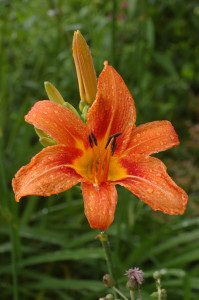
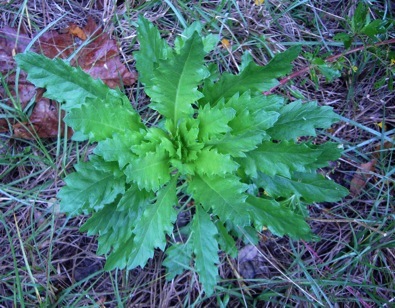
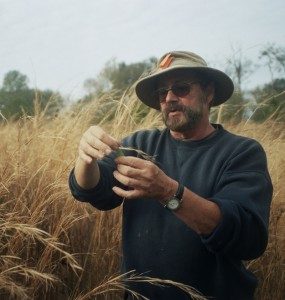



I have a wealth of plants in my yard in Miami Springs, Florida. One I’ve never seen before grows on 4-8 foot segmented stems about 1/2 inch in diameter. They bloom in summer and fall with a dense, cone-shaped head with multiple small flowerettes that come out only a few at a time but seem to be all “ready” at the same time. The stems are brown now(winter) but still have new starts emerging from the end of each one. Can you identify these? I don’t see a place to send you a picture here.
You can post a picture on the Green Deane Forum on the UFO board (unidentified flowering object) and/or send it to the email address that brought the newsletter.
A pickup truck may be a good choice, because they can be converted to run on wood. look at DriveonWood.com
I am building my Kieth gassifier now, for my ’97 F150.
The computer and modern intake manifolds make new trucks convert more eisaly than old carburated engines.
Enjoying the foriging videos and news letters.
Gratitude,
Bill Taylor
Humans get in high spirit in smelling pleasant odour e.g. of Rosa damacena and become much disgusted in an atmosphere of nasty or as some times described in the chemistry lab. “ obnoxious “e.g. of H2S gas. As for the odour from wild mustards and radishes, even the Angles come in terms with humans as Prophet Mohamed –peace be upon him and all other prophets – has advised those eating them or “Kurrat” – also called Egyptian leek or Allium Ampeloprasum var.porrum – not to attend prayers in the mosque gathering. He has added even the angles dislike the odour of these plants. However those eating them cooked are exempted. It is good of you providing useful info. on Ipazote despite you dislike it. I got so excited that I’ve gone to search on some chemistry related to the medicines used as remedy for human worms. Ipazote is still referred to as anthelmintic herb. Recently I’ve known a paediatrician named Satti S.A..and his colleague Humdoun A. at East Nile Hospital in Khartoum North – not far from where I live – have used a form of mebendazole (Vermox), 100 mg twice a day for three days to expel the worm Ascaris Lumbricoides from a 13 – year child thus releasing him from symptoms such as: colicky, central abdominal pain, vomiting and constipation with poor apatite { Ref. :Sudanese Journal of Paediatrics Vol11 No. 1pp 68,69 ).Mebendazole is a benzimidazole which is chemically : metyyl ( 5 – benzoyl – 1 H – benzimidazol – 2 – yl ) carbamate. For chemical components in Ipazote one may refer to: Medicinal Plants for Livestock – compounds – http/www.ansci.cornell.edu/plants/medicinal/epazote.html
My Neibor Has A Small Grove Of Both The Kind Of Bamboo For Stucturaul/ N Fishinshin Poles, She Had Some Sproughts Cumming Up And Mentioned Being A Novice Asisan Cook I Injoy It So Take and boil it up and i did, I Could Not Hold Down Any Food For about 3 Days After Eating 1 Plate, Can You Tell Me The Difrence In That And What I Might Buy At An Aison Market?
Thank You For Your Time Sincerly ,Ralph Creamer